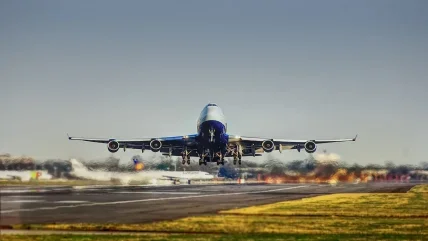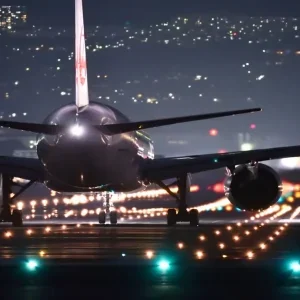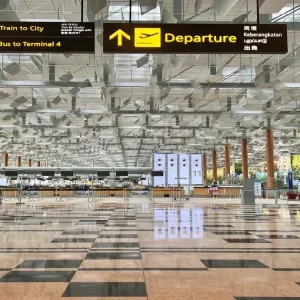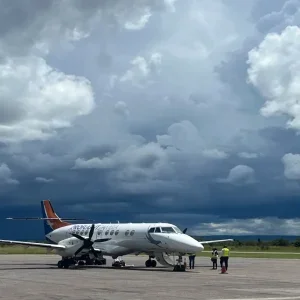
In recent years, societal polarisation has become an increasingly prominent issue globally. This divide, characterised by a growing gap between different socio-economic, political, and cultural groups, has significant implications across various sectors. The airport industry, serving as a critical infrastructure and a hub for international and domestic travel, is uniquely positioned at the crossroads of these societal tensions. This article delves into the impact of societal polarisation on the airport sector, examining the challenges it presents and the opportunities it offers for fostering greater unity and resilience.
Understanding Societal Polarisation
Societal polarisation refers to the process whereby a society becomes divided into distinct and often conflicting groups. This can occur along various lines, including political ideology, socio-economic status, race, religion, and cultural values. In the context of the airport sector, this polarisation can manifest in several ways:
- Passenger Demographics: Different passenger groups may have varying expectations, needs, and behaviours, leading to potential conflicts and challenges in service provision.
- Employee Relations: Airports employ a diverse workforce, and polarisation within this group can affect team dynamics, job satisfaction, and overall efficiency.
- Community Interactions: Airports often face opposition from local communities regarding issues such as noise pollution, environmental impact, and land use, which can be exacerbated by broader societal divides.
Impact on Passenger Experience
Airports are a microcosm of society, reflecting the broader trends and tensions present in the world. Societal polarisation can significantly impact the passenger experience in several ways:
1. Security Screening and Passenger Profiling
Increased polarisation, particularly along racial and cultural lines, can lead to heightened security concerns and stricter screening processes. While these measures aim to ensure passenger safety, they can also result in longer wait times, perceived discrimination, and a general sense of unease among travellers. It is crucial for airport authorities to balance security needs with the fair and respectful treatment of all passengers.
2. Customer Service and Inclusivity
With passengers coming from diverse backgrounds, providing inclusive and sensitive customer service is more important than ever. Airports must train their staff to handle a wide range of cultural norms and expectations, ensuring that all travellers feel welcome and respected. Failure to do so can exacerbate feelings of alienation and contribute to a negative travel experience.
3. Facility Design and Accessibility
The design of airport facilities must consider the needs of a diverse passenger base. This includes providing multilingual signage, accessible amenities for passengers with disabilities, and spaces that cater to different cultural practices (such as prayer rooms). By proactively addressing these needs, airports can create a more inclusive environment that mitigates the effects of societal polarisation.
Workforce Dynamics
The airport workforce is incredibly diverse, encompassing employees from various backgrounds, cultures, and socio-economic statuses. Societal polarisation can impact workforce dynamics in several key areas:
1. Employee Relations and Morale
Polarisation can lead to tensions and conflicts among employees, affecting morale and productivity. It is essential for airport management to foster a culture of inclusivity and mutual respect, providing training and support to help employees navigate these challenges.
2. Recruitment and Retention
Airports must be mindful of the broader societal context when recruiting and retaining staff. Efforts to promote diversity and inclusivity in hiring practices can help mitigate the impact of polarisation and ensure a more harmonious workplace.
3. Labour Relations
Labour unions and employee advocacy groups often reflect broader societal divides. Effective communication and negotiation strategies are essential to address the concerns of diverse employee groups and maintain positive labour relations.
Community Engagement
Airports are integral parts of their local communities, and societal polarisation can influence their relationship with surrounding areas:
1. Environmental and Social Impact
Airports must address community concerns regarding environmental and social impacts. Transparent communication and genuine efforts to mitigate negative effects can help build trust and reduce opposition.
2. Stakeholder Collaboration
Engaging with a diverse range of stakeholders, including local residents, businesses, and advocacy groups, is crucial for addressing the concerns of polarised communities. Collaborative efforts can lead to more sustainable and widely accepted solutions.
3. Corporate Social Responsibility (CSR)
Airports have a unique opportunity to contribute positively to their communities through CSR initiatives. By supporting local education, healthcare, and social programmes, airports can help bridge societal divides and foster greater unity.
Technological Solutions
Technological advancements offer promising solutions to some of the challenges posed by societal polarisation. Airports can leverage technology to enhance security, improve passenger experience, and foster inclusivity:
1. Biometric Screening and Automation
Advanced biometric screening technologies can streamline security processes, reducing wait times and minimising perceived discrimination. Automation can also improve efficiency and provide a more consistent experience for all passengers.
2. Digital Engagement and Communication
Digital platforms enable airports to communicate more effectively with passengers and employees. Multilingual apps, social media engagement, and personalised messaging can help bridge cultural and linguistic divides.
3. Data Analytics and Personalisation
By harnessing data analytics, airports can gain insights into passenger behaviour and preferences, allowing for more personalised and responsive service. This can enhance the travel experience and address the diverse needs of a polarised passenger base.
Case Studies and Best Practices
1. Changi Airport, Singapore
Changi Airport has consistently been recognised for its exceptional customer service and inclusivity. By investing in staff training, multilingual services, and accessible facilities, Changi has created a welcoming environment for travellers from around the world. Its proactive approach to community engagement and environmental sustainability also sets a positive example for the industry.
2. Schiphol Airport, Amsterdam
Schiphol Airport has implemented innovative technological solutions to enhance security and passenger experience. Its use of biometric screening and automated border control systems has streamlined processes and reduced wait times. Schiphol’s commitment to sustainability and community engagement further demonstrates its ability to navigate societal polarisation effectively.
3. Heathrow Airport, London
Heathrow Airport’s comprehensive diversity and inclusion programme addresses workforce dynamics and passenger experience. Through targeted recruitment initiatives, inclusivity training, and community outreach, Heathrow has fostered a more cohesive and welcoming environment.
Conclusion
Societal polarisation presents both challenges and opportunities for the airport sector. By adopting inclusive practices, leveraging technology, and engaging proactively with diverse stakeholders, airports can navigate these complexities and emerge stronger. The experiences of leading airports like Changi, Schiphol, and Heathrow provide valuable insights and best practices for the industry. As societal divides continue to evolve, the airport sector must remain agile and committed to fostering unity and resilience in the face of polarisation.
In conclusion, airports play a pivotal role in connecting people and cultures, and their ability to manage societal polarisation effectively is crucial for their success. By prioritising inclusivity, leveraging technology, and engaging with communities, airports can not only navigate the challenges of polarisation but also contribute to a more cohesive and connected world.






